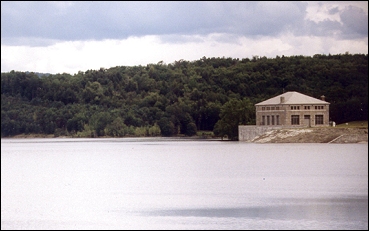 March 11, 2013 CONTACT: Adam Bosch (845) 334-7868 New York City to Receive Source Water Protection Award from American Water Works AssociationAward Recognizes Department of Environmental Protection’s Innovative and Effective Programs That Protect Water Quality Across its Upstate WatershedsNew York City Department of Environmental Protection (DEP) Commissioner Carter Strickland announced today that the City will receive the 2013 “Exemplary Source Water Protection Award” from the American Water Works Association (AWWA). The award for metropolitan-size systems recognizes organizations that protect drinking water at its source by setting ambitious goals and implementing programs that are effective and innovative. DEP Deputy Commissioner for Water Supply Paul Rush will accept the award at the AWWA Annual Conference & Exposition in June. “We are thrilled that AWWA has chosen to recognize New York City for its innovative thinking, long term planning, and robust financial commitment to source-water protection,” said Commissioner Strickland. “This award underscores DEP’s successful protection of water quality in our upstate watersheds by acquiring land around our reservoirs and their headwaters, helping neighboring communities improve their wastewater and stormwater infrastructure, and working with farmers, local governments and other watershed partners to create and strengthen programs that ensure clean, safe drinking water for 9 million New Yorkers.” “Source-water protection is fundamental work for water service providers as part of their larger mission to provide safe and sustainable water supplies for their communities,” said AWWA Executive Director David LaFrance. “We commend New York City Department of Environmental Protection for the impressive programs they have enacted to do this critical work on such a large scale, thereby ensuring that New Yorkers will have access to clean water supplies for generations to come.” Founded on the notion that the most cost-effective way to provide high quality water is to protect it at its natural source, DEP’s programs have become a national and international model. Each year water and public health professionals come from around the globe to study the City’s source water protection strategies. A key element of the success of the program has been the development of strong relationships with watershed communities, locally-based organizations, environmental groups, and federal, state, and local government agencies. The City has invested more than $1.5 billion in watershed protection programs since 1993, when the Environmental Protection Agency first issued the City a waiver from the federal requirement to filter tap water. A 1997 memorandum of agreement allowed the City to move ahead with three key components of its source-water protection strategy: acquisition of vacant land in the watersheds to minimize pollution related to widespread development in areas near reservoirs and other critical source waters; regulatory controls over new development to ensure water protection; and a series of City-funded partnership programs to address existing and potential sources of water pollution. This multi-pronged approach has provided flexibility to address evolving threats such as climate change, and the agility to reallocate resources and adjust to changing conditions. DEP’s source-water protection initiatives and achievements have included:
Founded in 1881, AWWA is an international, nonprofit, scientific and educational society committed to the safety and improvement of water quality and supply. Focusing its work in four strategic areas, Knowledge Creation and Exchange, Leadership and Advocacy, Member Engagement and Development, and Organizational Stewardship, AWWA unites the full spectrum of the water community to advance water management, education and science and to advocate for smart water policies. DEP manages New York City’s water supply, providing more than one billion gallons of water each day to more than nine million residents, including eight million in New York City, and residents of Ulster, Orange, Putnam, and Westchester counties. This water comes from the Catskill, Delaware, and Croton watersheds that extend more than 125 miles from the City, and the system comprises 19 reservoirs, three controlled lakes, and numerous tunnels and aqueducts. DEP employs nearly 6,000 employees, including almost 1,000 scientists, engineers, surveyors, watershed maintainers and others professionals in the upstate watershed. In addition to its direct investments in source water protection, DEP supports a $68 million payroll and pays $153 million in annual taxes in upstate counties DEP also has a robust capital program with a planned $14.4 billion in investments over the next 10 years that will create up to 3,000 construction-related jobs per year. For more information, visit nyc.gov/dep, like us on Facebook at facebook.com/nycwater, or follow us on Twitter at twitter.com/nycwater. | ||